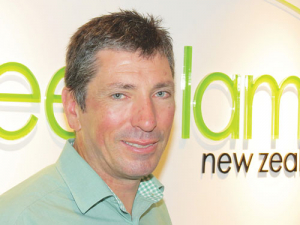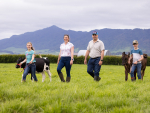Farmers are doing their bit to help the Government get 90% of lakes and rivers swimmable by 2040.
Over 97% of dairy farmers have already fenced their waterways; hill and high country cattle farmers have been given more time to fence.
Environment Minister Nick Smith says the ambitious plan, unveiled last month, recognises that New Zealanders expect to be able to take a dip in their local river or lake without getting a nasty bug; the new regulations on excluding stock from waterways are an important part of the plan.
DairyNZ chief executive Tim Mackle says the new rules to keep dairy cattle out of water endorse the hard work dairy farmers have done to protect waterways.
The farm fencing requirements have already been met by 97.1% of dairy farmers.
“And the target by May -- a month ahead of the new requirements -- is to be 100%, with all waterways running through dairy farms fenced off and all stock crossings bridged.
“This means right now very few dairy cattle have any access to waterways, and in just two months no dairy cattle – that’s zero dairy cattle – should have access to waterways on our farms.”
Federated Farmers water spokesman Chris Allen says stock exclusion regulation is a key area for hill and high country farmers.
“The solutions proposed need to be practical: Federated Farmers will make this a focus of the submissions we will be making on this policy. This is a critical area for us to get right.”
A new $100m Freshwater Improvement Fund announced by the Government will help farmers, Allen says.
Beef + Lamb NZ chief executive Sam McIvor notes that the Government expects the total cost of stock exclusion (including water reticulation) to be $367 million across the beef, dairy, deer and pork industries over the next 13 years.
“This is a significant cost and so we will be advocating that options for stock exclusion need to be flexible enough to allow the outcome of exclusion to be met in the most cost-efficient way for our farmers.
“From this perspective, it is good that the proposals would allow a farmer unable to meet exclusion requirements for practical reasons to apply to the relevant regional council for permission to develop a ‘stock exclusion plan’ as an alternative.
“These plans would set out how environmental impacts associated with stock access to waterways would be managed, and could even form part of a farm environment plan.”
BLNZ will analyse the proposal in more depth over the coming weeks and prepare a submission.
“We will be looking to engage with farmers as we do this to help ensure the outcome of improved water quality is achieved in a way that recognises the important contribution farmers can make and minimises the compliance burden,” says McIvor.
Mackle says fencing – currently 27,109 km – is always set back a healthy distance from waterways, varying from farm to farm depending on the soil type and contour of the land.
“This ensures the optimum levels of bacteria, nutrients and sediment are filtered. Farmers also keep cows off sensitive areas in the vicinity of the fenced waterways, for example, in wet weather.
“There’s still a way to go in some areas, and dairy farmers are well aware of that. We acknowledge that improving NZ waterways is a long journey. The good news is dairy farmers around the country are leading the way in protecting freshwater on their farms.”











